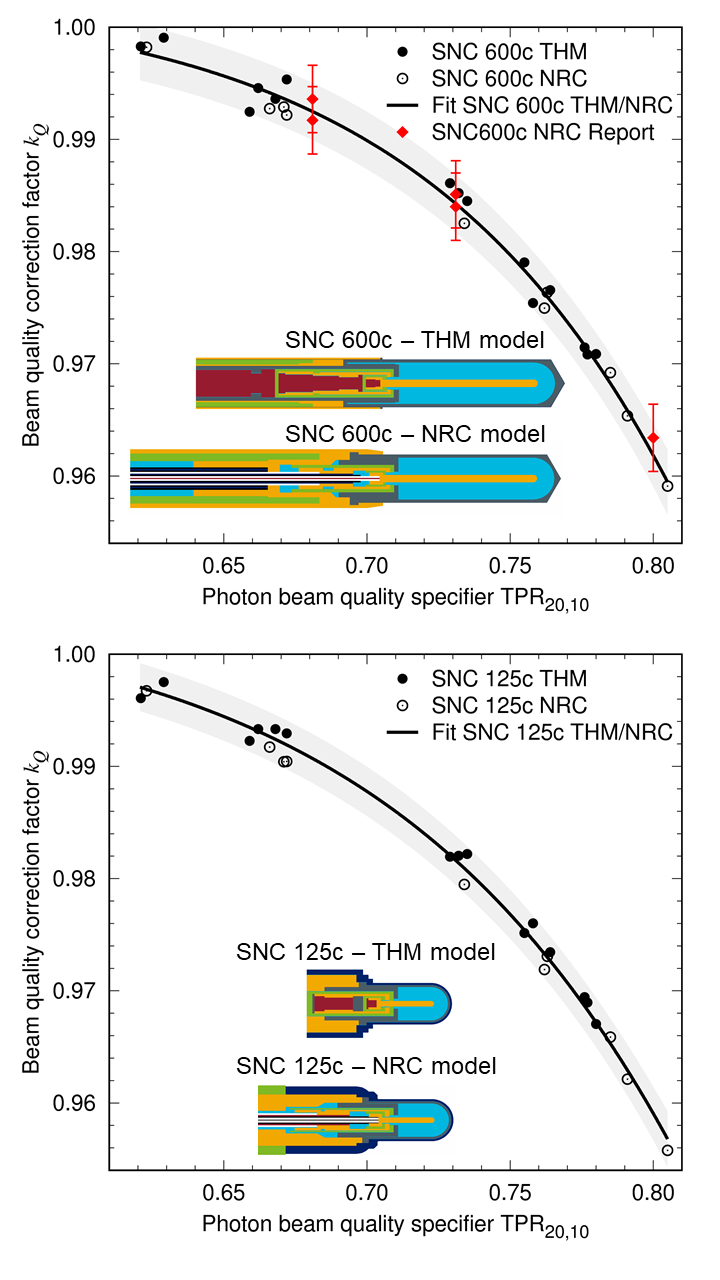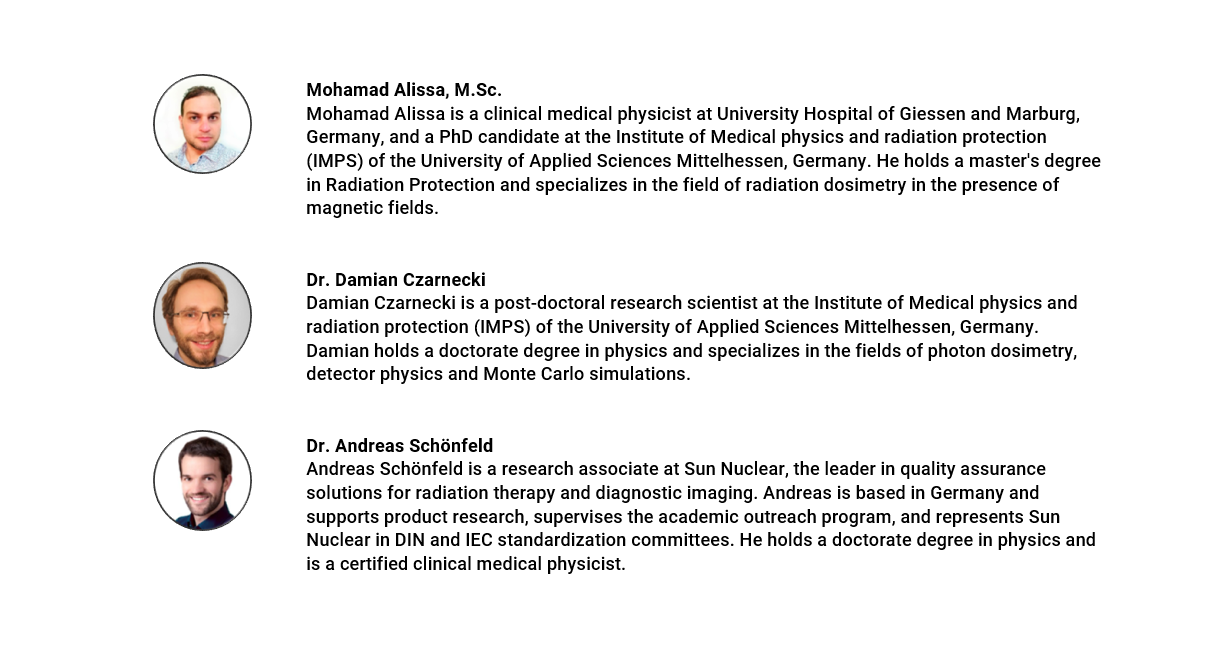Ionization chamber measurements of the absorbed dose to water in high photon energy beams are an essential part of radiation therapy dosimetry. The response deviation of an ionization chamber in reference conditions and clinical beam qualities is corrected for by the beam quality correction factor kQ, which provides one of the most significant sources of uncertainty in the measurement of the absorbed dose to water.
kQ values depend on their design, size and material composition of the components and are chamber specific. International dosimetry protocols often provide tabulated data for kQ values. However, the recent release of ICRU 904 provided updated values of the mean ionization energy of water and graphite (I-values), as well as updated density correction parameters. Consequently, kQ values based on ICRU 375 should be revised.
While Monte Carlo simulations using science grade algorithms like EGSnrc6 (National Research Council, Ottawa, Canada) are the method of choice to calculate kQ values for clinically used ionization chambers, the implementation and validation of ionization chamber models is not trivial. To ensure the highest quality standard, we connected two leading research groups, the Canadian national metrology institute NRC, and the Institute of Medical Physics and Radiation Protection of the University of Applied Sciences Mittelhessen, Germany, for the revision and calculation of kQ according to ICRU 904. Both groups independently created and validated Monte Carlo models of the reference class ionization chambers SNC 125c and SNC 600c to determine kQ values according to TRS 3981, AAPM TG 512
and DIN 6800-27. The Monte Carlo calculated data sets agreed with experimentally determined kQ values presented in NRC reports PIRS-32248 and PIRS-33279.

Figure 1 presents Monte Carlo calculated beam quality correction factors kQ for the reference class ionization chambers SNC 125c and SNC 600c, independently determined by NRC and THM according to the TRS 3981 protocol. The kQ values were calculated for various clinical photon beams with nominal energies ranging from 4 MV up to 24 MV. A polynomial function was fitted to the joint data sets calculated by THM as well as NRC.
kQdata according to TRS 3981, AAPM TG 512 and DIN 6800-27 for Sun Nuclear’s ionization chambers SNC 125c and SNC 600c, as well as the corresponding fit parameters can be openly accessed in Alissa et al. (2021)3.

References
1. IAEA. TRS 398: Absorbed Dose Determination in External Beam Radiotherapy. 2006.
2. McEwen M, DeWerd L, Ibbott G, et al. TG 51 Addendum to the AAPM's TG-51 protocol for clinical reference dosimetry of high-energy photon beams. Med Phys. Apr 2014;41(4):041501. doi:10.1118/1.4866223
3. Alissa M, Zink K, Tessier F, Schoenfeld AA, Czarnecki D. Monte Carlo calculated beam quality correction factors for two cylindrical ionization chambers in photon beams. Phys Med. Dec 28 2021;94:17-23. doi:10.1016/j.ejmp.2021.12.012
4. Seltzer S, Fernandez-Varea J, Andreo P, et al. Key data for ionizing-radiation dosimetry: measurement standards and applications, ICRU Report 90. 2016;
5. Berger M, Inokuti M, Anderson H, et al. Report 37. Journal of the International Commission on Radiation Units and Measurements. 1984;(2)
6. Kawrakow I, Rogers D, Mainegra-Hing E, Tessier F, Townson R, Walters B. EGSnrc toolkit for Monte Carlo simulation of ionizing radiation transport. 2000;doi:10.4224/40001303
7. DIN. Dosismessverfahren nach der Sondenmethode für Photonen- und Elektronenstrahlung Teil 2: Dosimetrie hochenergetischer Photonen- und Elektronenstrahlung mit Ionisationskammern. DIN 6800-2. Berlin: Beuth; 2020.
8. Muir B, McEwen M. Characterization of SNC 125c™ ionization chambers for measurements in linear accelerator photon beams. 2021. PIRS-3224.
9. McEwen M, Muir B. Characterization of SNC 600c™ ionization chambers for measurements in linear accelerator photon beams. 2021. PIRS-3327.
This article was originally published in the European Federation of Organisations for Medical Physics (EFOMP) Spring 2022 Newsletter. Find the full newsletter here.